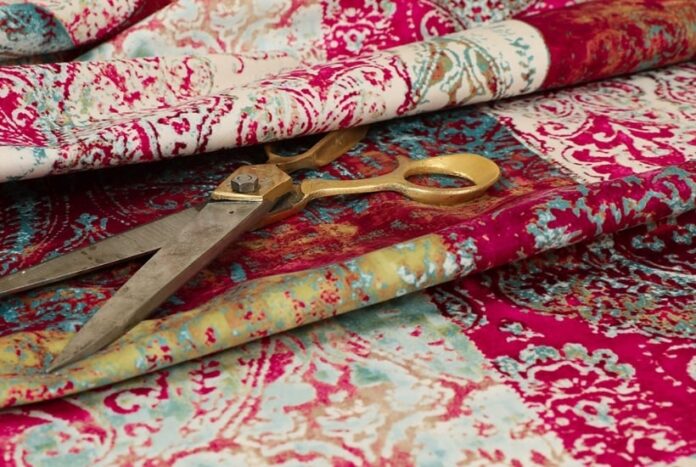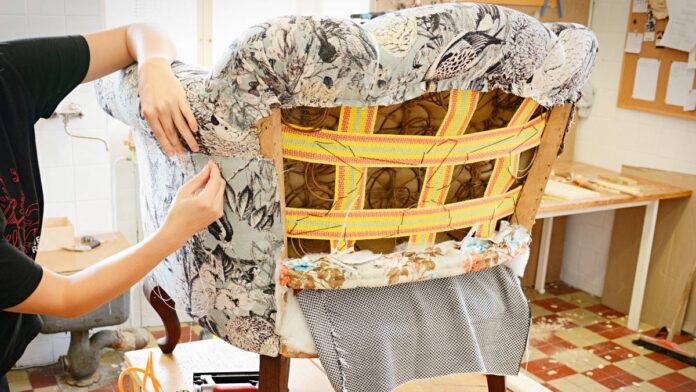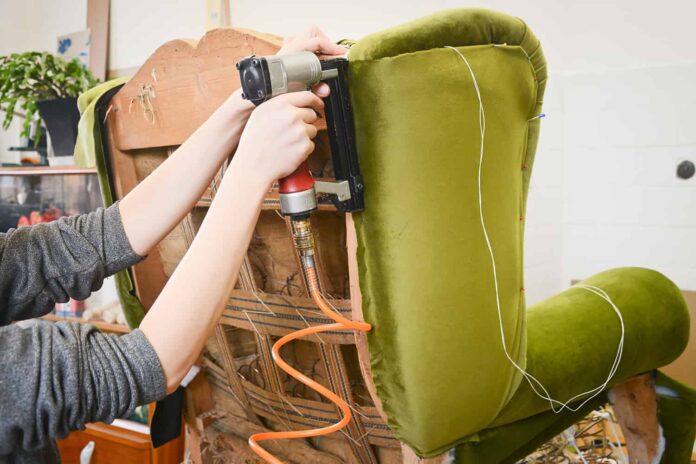Well-reupholstered furniture can transform your home, giving you something unique to your style, whether you opt for a monochromatic scheme or polychromatic color harmony. If you have some pieces that need a refresh, why not give it a go? Indeed, the process can be time-consuming, but you can save hundreds (or thousands).
It can be done by hand or with the help of modern technology; either way, your design will come to life and add personality to the room. Getting a chair or a sofa reupholstered will give it a new look and feel, making your home a cozier place to relax.
Reupholstering boils down to being sustainable, cutting costs, and inspiring creativity and thought. If you’re thinking about changing the look of your furniture through reupholstering, check out these tips before your next project.
Select A Project That Gives You a High Chance of Success
If you’re new to DIY, it’s recommended to pick a project that’s easy enough to build some confidence. That being said, not every furniture item is suitable for reupholstering, and you must decide whether it will last enough to justify the time and money invested in the process. Generally speaking, pieces of furniture with a solid structure and a detachable can be covered with different fabric. You should seek furniture made from wood, not veneer or plywood, as it will outlast the rest. Ensure the corner braces are intact and the construction is stable.
According to the experts, it’s worth sticking to simpler pieces like dining chairs or ottomans because the cushions on these furnishings are easily removable. Ensure there’s no major damage, the nails aren’t sticking out or missing, and so on. If there are problem areas, the furniture will require more work to rehabilitate than you want to put into it. Whatever you do, don’t start with a chair with multiple cushions, piping, and a skirt. While beginners can handle some projects, there’s the risk of destroying the furniture items for more complicated projects.
Figure Out How Much Fabric You’ll Need

Even if you can reupholster furniture with any type of fabric, not all fabrics are thick or strong enough to last for many years. Jacquard is a fantastic fabric because it’s durable and features complex patterns, not to mention it’s ornately beautiful. Raised motifs are created in the fabric using a jacquard loom, a device that controls individual warp yarns. Most fabrics are woven before colors and designs are incorporated, but jacquard prints and fabrics are woven directly into the fabric as it’s being made. All in all, jacquard fabric provides texture and style to your home.
Get plenty of fabric for your reupholstery project – the best way is to measure. Few things are worse than running out of fabric or being unable to find more jacquard fabric. If you plan to reupholster a chair, you’ll need roughly three to seven yards, but it depends on the chair type. It’s necessary to take into account the furniture piece’s size, the fabric’s dimensions, and how much fabric you want to use. When it comes down to what you need, you must be as precise and accurate as possible. If your fabric is patterned, you should order extra so the print is arranged nicely everywhere.
When shopping for reupholstery fabric, it’s important not to rush things. Reupholstering the furniture is an opportunity to give it a modern makeover, not just imitate the previous look. Chances are you have at least one item that’s seen better days and dream about replacing it. Reupholstering the piece is less expensive than replacing it (and it’s a lot more fun). If you’re not sure what you want, take home the fabric sample and set it against the furniture to see if you like it. Stick with it for a couple of days before you make up your mind. At the end of the day, you can opt for a different color or change the pattern scales.
If You End Up with Extra Fabric, Get Creative

You may find that you have leftover fabric piling up in the corners of your workshop. Don’t fret because you can repurpose the extra fabric to create different items; the more common option involves using it for repairs, such as reattaching the original fabric back in place. You can turn jacquard fabric into pillow covers or arm sleeves. You can opt for a smaller overlap if you’re short of fabric. Anyway, take a look at YouTube videos to get a better idea of the basic techniques. It’s amazing what you can make with what’s considered rubbish. As you struggle with the “toss or not to toss” dilemma, you lose the chance to create something worthwhile.
If the fabric isn’t moldy, smelly, or soiled, it doesn’t need to be removed. You should remove the old fabric only if it’s visible through the new fabric. You can make countless things with leftovers for yourself, your friends, or your family. Examples include but aren’t limited to curtains and drapery, duvet covers, sleep masks, drawstring patches, and napkins. This list isn’t exhaustive by any means. Make use of the leftover fabric, or at least some of it, so you don’t end up with a box full of never-ending scraps. Get creative.

Final Thoughts
Reupholstering furniture can work miracles, so why should you wait any longer to get that work done? You could restore a treasured family heirloom, such as your grandfather’s armchair or the cradle your mother used when you were a child. No replacement will ever be enough. With a little bit of patience and practice, you can learn how to reupholster furniture. Don’t attempt to tackle a sofa or an armchair from the beginning, especially if you’re not crafty or have any kind of experience with DIY. Gradually work your way up to more ambitious projects.
You can make last-minute changes or add design details that haven’t been in the original piece of furniture. By making the right choices, you can breathe new life into your beloved piece.




